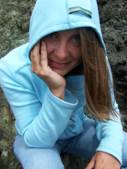
Editor’s Note: Graduate student Kyle Reynolds describes her experience in the South Pacific, where she participated in a 2006 research cruise to study organisms living on the hydrothermal vent system of the Lau Basin.
by Kyle Reynolds, Benthic Ecology Lab
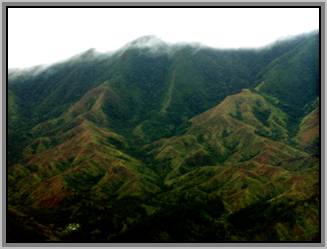
Looking out of the airplane as it began its descent toward Fiji, I remember feeling like I was having an out-of-body experience. We had crossed the equator and the International Date Line during this flight – two firsts for me! Once the plane touched down and we made our way to Suva, the capital, I would be embarking on a multidisciplinary research expedition with several teams of scientists from around the world to study the biology, chemistry, and geology of hydrothermal vents in the Lau Basin. My heart was in my throat as I elatedly took in the sights and sounds of my last moments on dry land for the next 30 days.
Once onboard the R/V Melville (the Scripps Institute of Oceanography ship we’d be using), the scientists quickly went about the task of securing their own cargo in their lab spaces to keep anything from spilling or breaking in transit. Our research would involve multiple deployments of a remotely operated vehicle (ROV) named the Jason II, or “Jason” for short. Jason would be working almost non-stop over the next month to take videos as well as animal, geological, and chemical samples for the various researchers’ projects. I was there to obtain snail samples for my thesis research, and would be using them to study their reproductive adaptations. Being the newbie, I was given the midnight to 4:00 a.m. shift to stand my watch in the Jason control van each night. The control van is a large metal container from which the crew can pilot Jason, while scientists record the data, log notes, and direct the collection efforts.
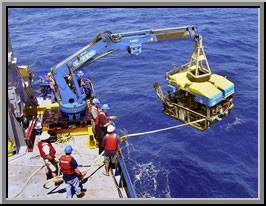
I remember watching as they began to lower Jason into the water for its first of many dives to the bottom, over a mile and a half below our ship. First Jason went in and then Medea, Jason’s partner vehicle, which is attached along the same tether and hangs out between the ship and Jason. Medea’s job is to act like a shock absorber for Jason to protect it from any wave action or sudden jerks on the line by the ship. Nearly four hours after deployment, Jason had finally reached the seafloor and the real fun could begin!
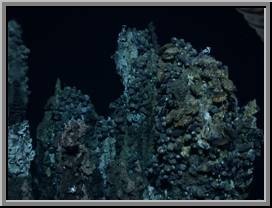
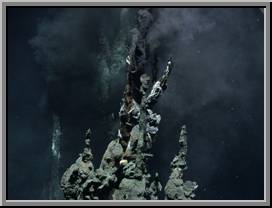
For my very first shift in the control van, I walked through the doors and a subsequent set of curtains that are hung to deter any outside light. As my eyes adjusted to the dark room, I looked toward the pilot, co-pilot, and navigator seated in the front and saw an entire wall of video monitors displaying all angles above, below, and in front of Jason. It felt like I had just stepped into the ROV itself – as if I were at the bottom of the ocean, peering through Jason’s windows, surrounded by black smokers and all sorts of amazing creatures I’d never seen before! In a place that had never seen the light of day, under immense pressures that would crush a human, here was an entire thriving and bustling community of organisms competing for space and searching for food. All around, black ‘smoke’ (actually a plume of minerals that look like smoke) was spewing forth from what looked like miniature, misshapen volcanoes. The water was literally shimmering in psychedelic waves from the diffuse heat venting out of the earth’s crust. I was instantly and completely hooked on this strange and beautiful new world.

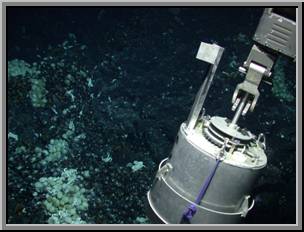
We spent the next four weeks collecting all kinds of samples with Jason. The ROV would stay down at the bottom collecting for about three days at a stretch, during which time the scientists and pilots worked around-the-clock shifts. When it was time to bring Jason aboard again, everyone would gather and get ready to process their particular samples as quickly as possible. There were several different chambers, called bioboxes, on the ROV that kept the animals alive in ambient seawater. When the samples were collected, scientists logged which animals went into which box so they could be easily found again.
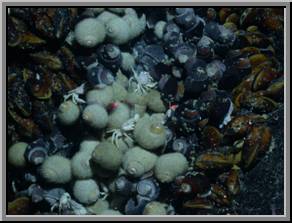
I originally got into this field of study because I was fascinated by the idea of hydrothermal vent environments and the animals that had adapted to life there. To be honest, I thought it was more of a pipe dream than something I could actually experience in person. I figured this only happened to actors in IMAX movies!
It has definitely been an incredible journey and has taught me a valuable lesson: dream big. No matter how out of reach your goals may seem, there’s always a way to reach them. It reminds me of my favorite Dr. Seuss book, “Oh, The Places You’ll Go!” Who knew Dr. Seuss would be so right!

